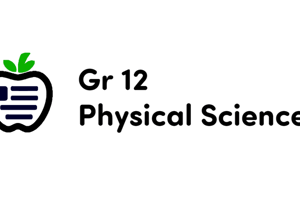Podcast
Questions and Answers
In the context of physics, what distinguishes force as a vector quantity?
In the context of physics, what distinguishes force as a vector quantity?
- It only has direction.
- It has both magnitude and direction. (correct)
- It is measured in kilograms.
- It only has magnitude.
Mass and weight are the same thing and can be used interchangeably in scientific contexts.
Mass and weight are the same thing and can be used interchangeably in scientific contexts.
False (B)
Explain how a spring scale measures force, relating it to the concept of balanced forces.
Explain how a spring scale measures force, relating it to the concept of balanced forces.
A spring scale measures force by gauging how much an object stretches or compresses a spring. The weight of the object is balanced by the restoring force of the spring.
The supporting force that is perpendicular to a surface is called the ______ force.
The supporting force that is perpendicular to a surface is called the ______ force.
Match each type of force with its description:
Match each type of force with its description:
Which of the following is true regarding static and kinetic friction?
Which of the following is true regarding static and kinetic friction?
The normal force is always equal to the weight of an object.
The normal force is always equal to the weight of an object.
Explain how forces can combine as vectors and why this is important when analyzing forces acting on an object.
Explain how forces can combine as vectors and why this is important when analyzing forces acting on an object.
In a free-body diagram, all forces are considered as if they act on a single point called the ______ .
In a free-body diagram, all forces are considered as if they act on a single point called the ______ .
What does it mean for the net force on an object to be zero?
What does it mean for the net force on an object to be zero?
Flashcards
Force
Force
A push or pull exerted by one object on another.
Weight
Weight
The gravitational force exerted on an object.
Mass
Mass
A measure of the amount of matter in an object.
Normal Force
Normal Force
Signup and view all the flashcards
Air Resistance
Air Resistance
Signup and view all the flashcards
Friction
Friction
Signup and view all the flashcards
Net Force
Net Force
Signup and view all the flashcards
Static Friction
Static Friction
Signup and view all the flashcards
Kinetic Friction
Kinetic Friction
Signup and view all the flashcards
Free-Body Diagram
Free-Body Diagram
Signup and view all the flashcards
Study Notes
- In science, force is defined as a push or a pull exerted by one object on another.
- The unit for force is the newton (N), equivalent to 1 kg⋅m/s².
- Force is a vector quantity, possessing both direction and magnitude.
Identifying Forces
- Weight refers to the gravitational force acting on an object.
- Mass is the measure of the amount of matter, which can be found using a balance.
- Mass is not a force.
- Spring scales measure weight and other forces via the pushing or pulling of a spring.
- Normal force is a supporting force exerted perpendicular to a surface.
Types of forces descriptions
- Air resistance: Air exerts a force against the moving box in a way that increases with the box's speed.
- Friction: force produced when two sliding surfaces act opposite to one another relative motion to the surfaces.
- Gravitational force: Earth exerts a force of attraction.
- Normal force: Object exerts a force on another object in a direction of perpendicular contact.
Exploring Friction
- Friction opposes motion between two surfaces in contact, arising from small points pushing against each other.
- Static friction occurs when surfaces are not sliding relative to each other, such as a box on a ramp.
- Kinetic friction resists motion when surfaces are sliding.
- Kinetic friction is generally less than the maximum static friction.
- Unlike air resistance, static and kinetic friction typically do not vary with speed or contact area.
- Friction is proportional to the normal force, which pushes the surfaces together and is perpendicular to the surface.
Using Diagrams to Analyze Force
- Normal force and static friction typically oppose other forces.
- When forces acting in the same direction produce a greater force.
- Forces combine as vectors.
Free-Body Diagrams
- Free-body diagrams model forces acting on a single object.
- Forces are represented as vectors acting from the object's center of mass.
Determining Net Force
- Net force (Fnet) is the vector sum of all external forces on an object, also written as ΣF.
- When forces are balanced, the net force is zero, resulting in no net effect on the object.
Forces in One and Two Dimensions
- Forces in one dimension can be represented as positive or negative numbers.
- Forces in two dimensions are analyzed separately in perpendicular directions.
- Coordinate systems can be oriented to align with frictional and normal forces.
- Normal force on a horizontal surface at rest equals the object's weight.
- Normal force on a slanted surface equals the component of gravity perpendicular to the surface.
Studying That Suits You
Use AI to generate personalized quizzes and flashcards to suit your learning preferences.




